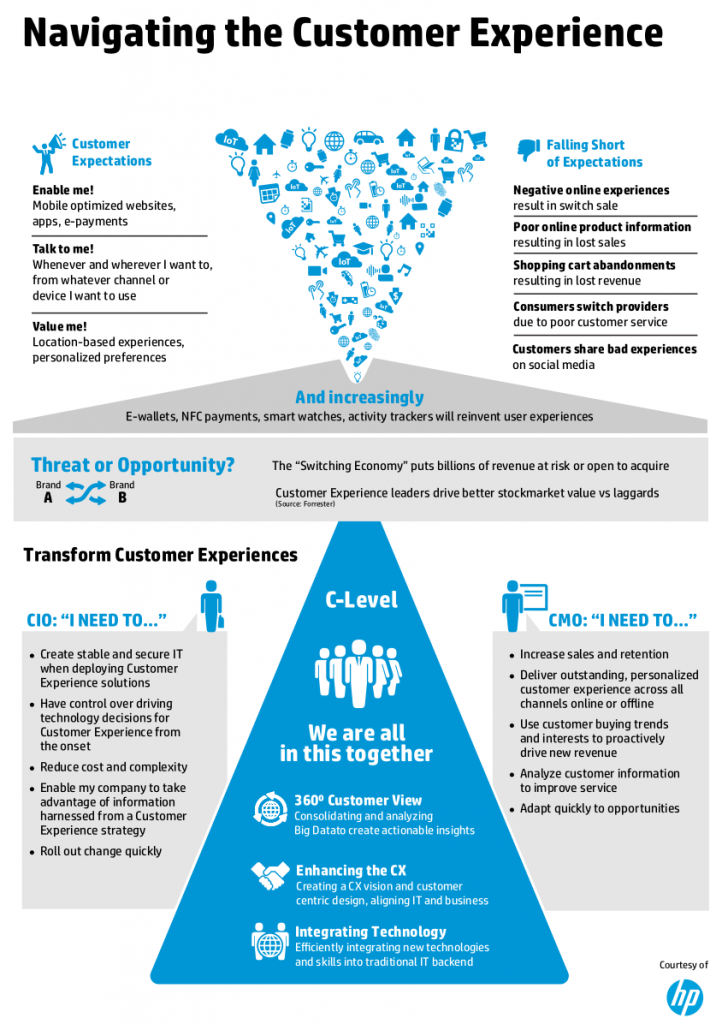Big data: Friend or foe
Share
Marketers need to effectively use big data to turn connected consumers into allies, writes Dr. Roger Kermode, practice principal of analytics and data management at HP South Pacific.
Chief marketing officers are operating in a period where expectations among connected and mobile customers have never been higher. Customers and prospects expect to engage on their terms and they insist on consistency across multiple points of contact and channels for a seamless delivery of service. Get it wrong and they are unlikely to stick around. For many CMOs this is a make or break opportunity.
New digital channels of engagement are transforming the marketing landscape and opening up new ways to connect with customers and prospects. Today marketers have more opportunities to influence people, track their loyalty and develop ongoing relationships. The scary part is making sense of the flood of data flowing your way from multiple touch points without being swept away.
To court these mobile, tech savvy customers, the chief marketing officer must transition from scattergun, one-to-many marketing to new personalised engagement models. CMOs must work with the CIO to remove barriers resulting from aging technologies and old systems of engagement and build a better, faster, personal and secure customer experience – one that enables the enterprise to expand market share and drive profitable growth.
Customer experience the new business priority
Delivering a quality customer experience is vital to remaining competitive. A survey of nearly 3,000 global business leaders by technology research group Forrester found that 74% rank improving customer experience among their top two highest priorities. Second only to growing revenues rated at 77%.
The reason they need to improve is clear. The growth of new digital engagement channels means it’s now easier than ever for customers to connect not only with your organisation but also with the competition.
This is creating new customer-retention challenges. Unhappy consumers are quick to use the power of social media to voice their displeasure – and higher customer churn means higher costs.
To avoid such a scenario marketers must create a dynamic relationship that better anticipates and exceeds customers’ expectations. They must deliver consistently superior products and services through multiple channels so that customers can engage on their own terms.
Buckling under old technology
Making use of vast new sources of structured and unstructured data is key to better understanding consumers. In the past your knowledge of customers was limited to transactional relationships. Now social media, voicemails, contact centre recordings, instant messaging and email can give you a far more robust and complete view.
Marketing execs with the capacity to make sense of all this information can deliver an outstanding, personalised customer experience across all channels and devices. But, like many others, you may find yourself in a position where you’re hampered by ageing technology that can’t cope with either the volume, variety or velocity of data.
Those embarking on customer analytics commonly complain about siloed data repositories, poor data consistency, incompatible data types and long project lead times. Multiple data sources and systems also create additional complexity and heighten security concerns.
The risk is that instead of all this information becoming a business benefit, it becomes a business burden.
Getting to know your customers
To harness the power of big data you must work with IT on an analytics solution that can deliver useful intelligence across all information sources in real time.
Such insights are critical to better understanding the needs of customers and to keep products and services consistently relevant to their preferences. Ideally your solution should be able to:
- Keep track of the entire customer experience to better manage and forecast business outcomes in marketing, sales, service and ongoing engagement,
- integrate analytics into key business processes to improve the speed and accuracy of decision-making across the organisation,
- deliver insights into customer behaviour to support sales conversion, cross-selling and upselling,
- help manage customer churn and non-compliant behaviour, and
- integrate data from numerous internal and external sources, such as enterprise, sales, social media, market research and internet advertising, for a truly holistic view of the customer.
Up close and personal
The effective use of data analytics will give you unprecedented insights to lure and retain customers. Consumers can be categorised and a new level of intimacy nurtured so that products and sales strategies can be optimised and tailored accordingly.
Such consistent and personalised interaction increases customer loyalty and their propensity to buy. More effective customer analytics also helps you:
- Identify profitable customer segments for target marketing and efficiently convert leads into new customers,
- capitalise on up-sell and cross-sell opportunities and quickly refine products and services to meet changing customer demands,
- interact across all online and offline, as well as traditional and digital channels, to enhance the customer experience and provide a consistent brand experience,
- create more intimate interactions to build brand loyalty,
- predict potential retention risks and execute strategies to reduce churn,
- identify and minimise fraudulent and other non-profitable customer behaviour, and
- establish one synchronised view of the customer.
Once you have a new data platform and analytics in place you can look forward to shorter sales cycles, increased speed to market and overall lower cost of sales.
Increasing the value of marketing
Marketing is relatively new to the automation journey compared to other parts of the enterprise and scrutiny is intense. There is pressure from above to improve its value and effectiveness.
Competition is fierce because social media and new digital channels have given consumers new power as they seek to engage on their own terms. But by deploying advanced analytics you can unlock the value of big data and turn a potential disadvantage into a clear marketing edge.
By understanding your customers you can really start to build intimacy and indulge their individual preferences. This in turn will open up new frontiers for your businesses and allow you to expand market share and increase revenue.
Click image to enlarge.
















